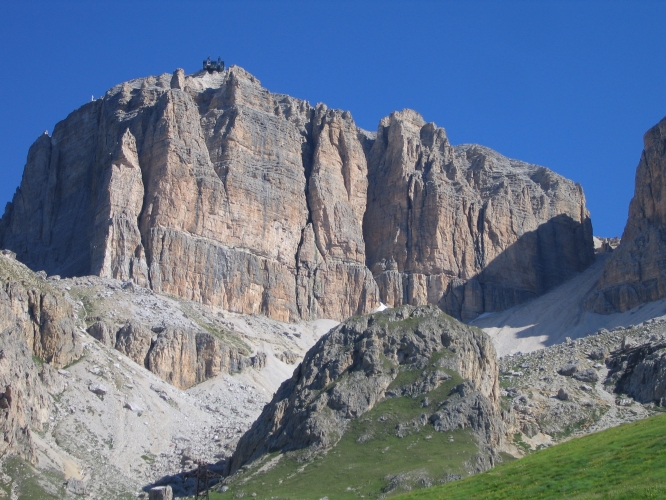|
Piz Pordoi is the most popular of the peaks in the Sella massif, on account of the cable car that goes straight to the
summit from Passo Pordoi. On foot, the 2,000 vertical feet of trail up the Pordoischarte take one to two hours, depending on
what shape you're in. The massive Northwest Face offers a very long moderate route, and the pillar at the West corner
is the Mariakante. The latter has the dubious distinction of being within shouting range of the cable car, which means that
tourists will wait at the summit to take pictures of the climbers they watched while riding up. Nevertheless, it's a
superb climb, although not exactly a wilderness experience.
A word on alpine ratings .
Routes: Mariakante ( IV+ )
 Pordoischarte (ski descent) Pordoischarte (ski descent) |

 |
References: | A. Köhler and N. Memmel, Classic Dolomite Climbs
(The Mountaineers 1999) |
| | S. Stuflesser, Klettern rund ums Sellajoch
(Lochner Verlag 1997) |
|

Piz Pordoi from just above the Pordoi Pass. The Mariakante starts on the detached pillar to the left,
then crosses over to the main face.
|



 Roundtrip from Pordoi Pass:
Roundtrip from Pordoi Pass: